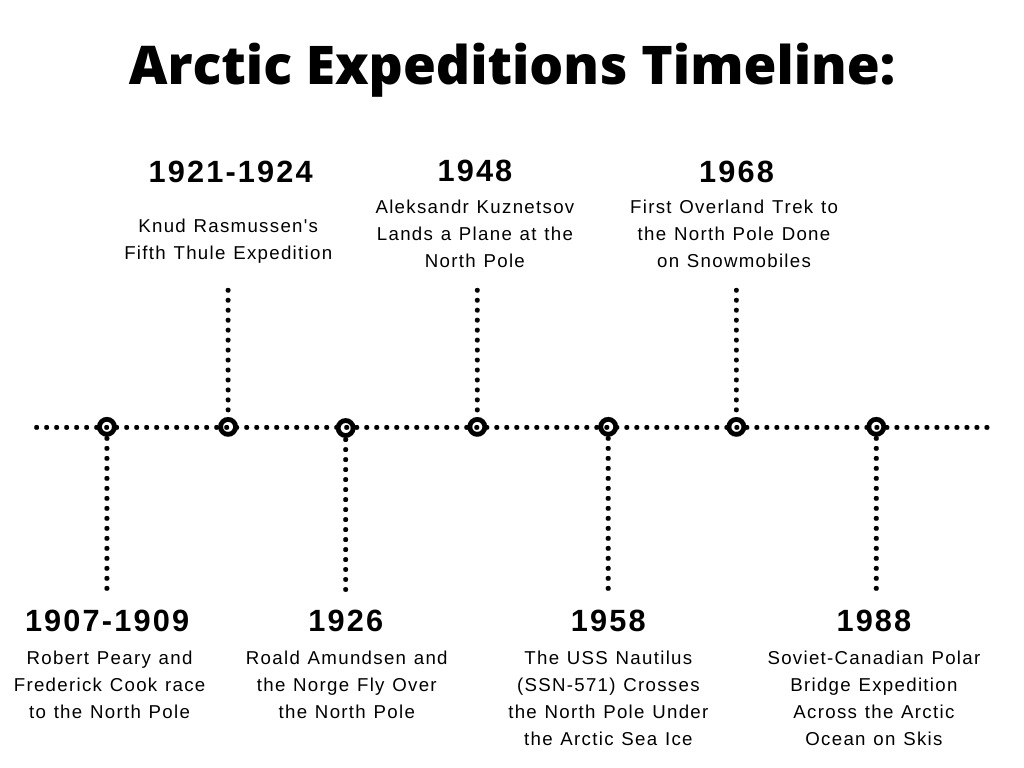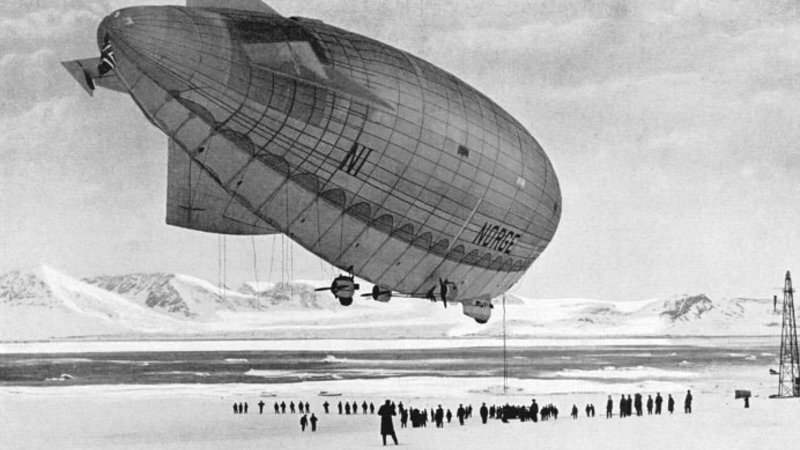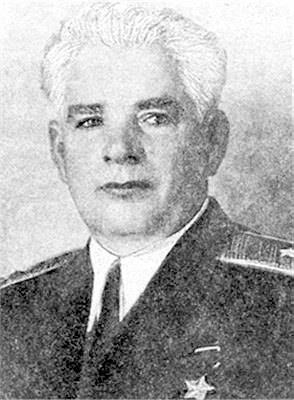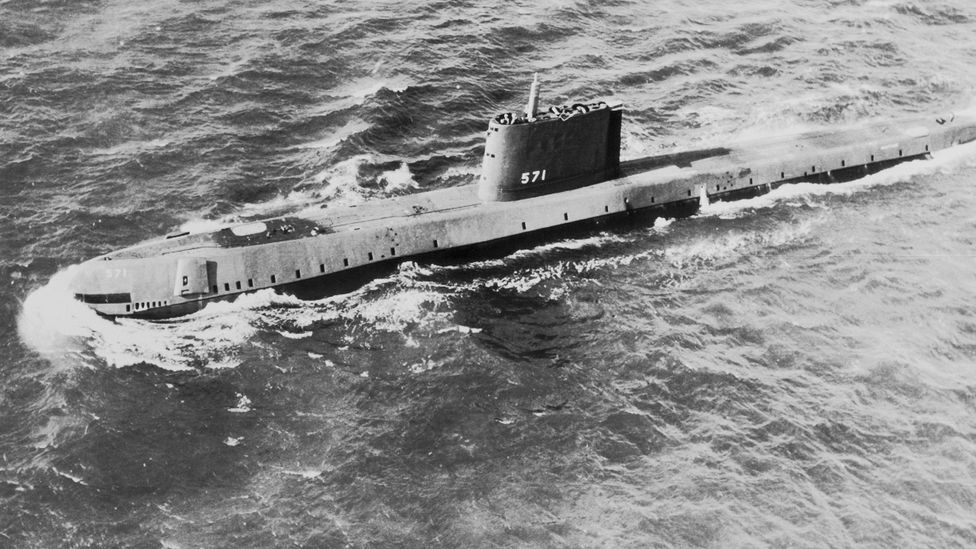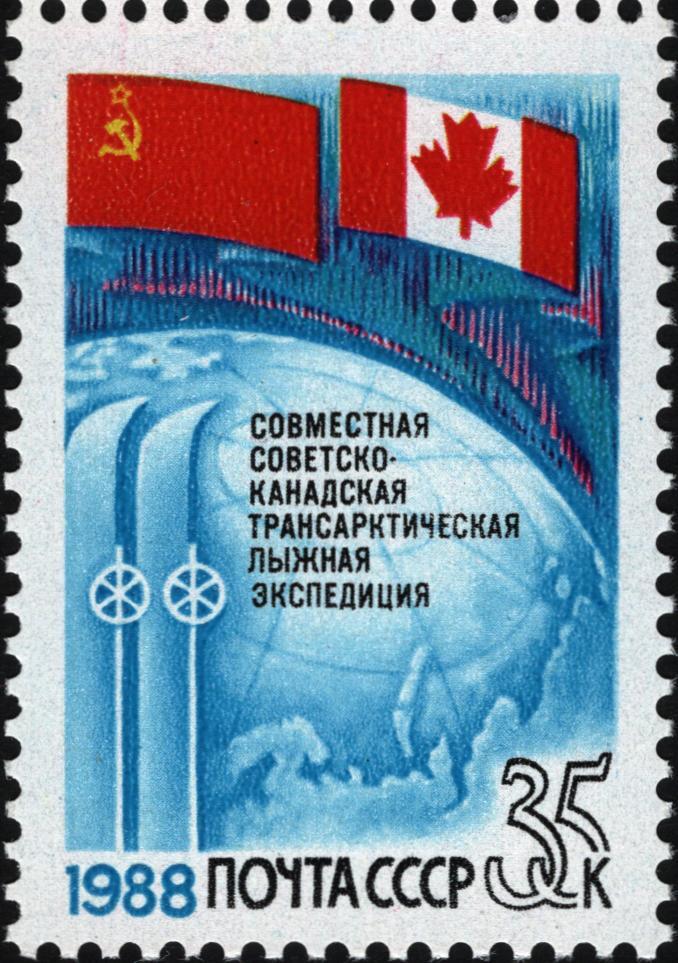Snowmobiles, Submarines, and Airships - Later 20th Century Explorers
1921-1924 - Knud Rasmussen’s Fifth Thule Expedition – From Greenland to Siberia Across the Northwest Passage
In 1921, Danish Arctic explorer Knud Rasmussen set off to traverse from Greenland across the Canadian Arctic as far as Alaska and Siberia. Along the way he moved from one Inuit community to another, listening, learning, and documenting the Inuit way of life. Starting near present-day Naujaat, formerly known as Repulse Bay, in Nunavut, Rasmussen set off on dogsled with two Inuit, Qaavigarsuaq and Arnarulunnguaq. Together, they traveled more than 30,000km of inhospitable terrain, much of it unmapped. This longest-ever sled journey took more than three years. Along the way, they encountered many Inuit communities and amassed a collection of more than 20,000 specimens, including photographs, biological samples, and ethnographical and archeological items. He worked to document cultures that were still relatively untouched by the wider world, and his Inuktitut speaking abilities allowed him to learn stories and myths from the local people that other ethnographers could not.
“Give me winter, give me dogs. You can keep the rest.”
Knud Rasmussen
1926 Airship Expedition – The Norge
This was the first expedition to fly an airship over the North Pole. The expedition was the project of polar explorer Roald Amundsen, pilot Umberto Nobile and the wealthy American adventurer and explorer Lincoln Ellsworth who, along with the Aero Club of Norway, financed the trip. The expedition left from Ny-Ålesund, Svalbard, Norway and flew in a dirigible to the North Pole, where the expedition members dropped flags of their respective countries onto the sea ice below. The airship became damaged due to ice encrustation and bad weather, and so the crew was forced to land the ship in Teller, Alaska, earlier than their intended destination of Nome.
1948 - Aleksandr Kuznetsov Lands an Airplane at the North Pole
Aleksandr Kuznetsov was the leader of the first undisputed team to set foot on the North Pole. Kuznetsov led the Sever-2 team of Soviet scientists who flew and landed three Lisunov Li-2s at the North Pole on April 23, 1948. Soundings made by the team were the first to indicate an underwater mountain ridge beneath the ice and water at the North Pole.
1958 – USS Nautilus (SSN-571) Crosses the North Pole Under the Arctic Sea Ice
In response to the nuclear threat posed by Soviet intercontinental ballistic missiles (ICBMs) as a result of the Sputnik launch, President Eisenhower ordered the U.S. Navy to attempt a submarine transit of the North Pole to gain credibility for the soon-to-come submarine-launched ballistic missile (SLBM) system. This mission was named Operation Sunshine. Getting underway from the West Coast, the U.S.S. Nautilus (the world’s first functioning nuclear-powered submarine) stopped at San Dego, San Francisco, and Seattle before transiting the Bering Strait into the Chukchi Sea. The submarine was turned back by deep drift ice in the shallow waters, however, and she had to return to Hawaii to await better ice conditions. A few months later, the conditions were finally right, and the Nautilus passed through the Bering Strait again and was able to successfully reach the North Pole under the ice. The submarine then exited the Arctic Ocean past Eastern Greenland. The expedition demonstrated the ability of the U.S. Navy to navigate at high latitudes and beneath sea ice, something which is notoriously difficult to do. There was a risk that the submarine would become disoriented beneath the ice and that the crew would have to play “longitude roulette.” The commander of the Nautilus, William R. Anderson considered the possibility of having to blow a hole in the ice with torpedoes so the sub could surface, but luckily this option proved unnecessary.
1968 – Plaisted Expedition – First Confirmed Overland Expedition to the North Pole
This is perhaps the most unlikely Arctic expedition in history. A group of average, middle-aged men, including an insurance salesman, a mechanic, a doctor, and an engineer, became the first confirmed team to reach the North Pole overland, traveling on snowmobiles over the Arctic ice. The expedition began as a dare in a bar in northern Minnesota between two men, Ralph Plaisted and Art Aufderheide. The two – with Plaisted as the self-appointed leader – began roping their friends and contacts into the expedition, and they quickly attracted media attention, as well as sponsorships from numerous adventure gear companies. The crew made a first attempt in 1967, with a CBS News crew in tow, but they had to turn around due to poor planning. In 1968, they tried again, bringing two Swiss cameramen and receiving constant resupply by aircraft. The ski-doo snowmobiles they were using would frequently break down, and they had to battle against melting ice as their expedition stretched into the Arctic spring, but they finally made it to the North Pole on April 20th, 1968, an achievement that was confirmed by Air Force jets corroborating their positions from overhead. Only after the expedition had ended did they realize that they were the first confirmed group to reach the pole overland.
"They said nobody could just take a few cronies from Minnesota and go to the North Pole. I told them they could just sit there and watch me.’’
Ralph Plaisted
1988 – Soviet-Canadian Polar Bridge Expedition
The expedition, also known as Skitrek, was a joint effort between Canada and the Soviet Union to send a team of skiers from Russia to Canada over the North Pole. The expedition began on March 3, 1988, when a group of thirteen Russian and Canadian skiers set out from Siberia. The team reached the pole on April 25th and concluded their trek on June 1st, 1988 when they reached Ward Hunt Island, off the Coast of Ellesmere Island in Northern Canada. At the North Pole, they were welcomed by a group of dignitaries from the Soviet Union and Canada, including members of the international press who had flown to the pole for the occasion. The daily progress of the skiers was tracked by the UoSAT-OSCAR-11 satellite and transmitted around the world by radio, and thousands of school children tuned in to follow the expedition’s daily updates.

